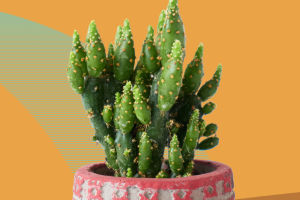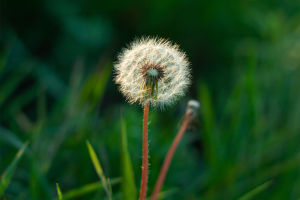The healthy growth of plants depends on regular watering.
Water is a lifeline for plants, playing an essential role in their physiological and biochemical processes.
First, water is necessary for plants to perform photosynthesis, the process that allows plants to convert sunlight into energy. Insufficient water directly impacts the efficiency of photosynthesis, making it difficult for plants to generate the nutrients needed for growth.
Additionally, water is crucial for the structure of plant cells. It enables cells to remain turgid, which supports the plant's structure and keeps it upright. Without enough water, plants lose vitality, and symptoms such as yellowing leaves and withering stems become evident.
After absorbing water from the soil, plants distribute it throughout their systems via roots. This transport process, known as transpiration, allows water to evaporate through the leaves pores, creating pressure in the roots and drawing in more water, continuously meeting the plant's water needs.
Transpiration not only aids in water absorption but also helps regulate the plant's temperature, preventing overheating in warm conditions. This water cycle ensures that plants maintain internal balance amidst environmental changes, promoting better growth.
However, the frequency and method of watering have a significant impact on plant health. Different plants have varying water requirements—some thrive in moist environments, while others are drought-tolerant.
Over-watering can make the soil too wet, affecting root respiration and even leading to root rot. Roots in overly wet conditions cannot access sufficient oxygen, which ultimately harms plant health.
Conversely, if water is insufficient, the soil's moisture level is inadequately maintained, the plant roots cannot absorb enough water, and the plant's growth stagnates or may even wither and die.
Aside from plant types, watering should be adjusted according to seasonal and environmental factors. During summer or dry seasons, water evaporates faster, so plants require more frequent watering.
In contrast, in winter or rainy conditions, watering should be reduced to prevent excessive soil moisture. The plant's growing environment, whether indoors or outdoors, and factors like direct sunlight also influence its water needs.
For instance, outdoor plants often require more frequent watering than indoor ones, as they're more exposed to sun and wind, causing quicker water evaporation.
Watering techniques are equally important. Water should be poured directly at the plant's roots to ensure it can be quickly absorbed, rather than on the leaves, to reduce evaporation loss. Especially in high temperatures, water droplets on leaves may create scorch marks.
Additionally, using soil with good drainage allows excess water to flow out, preventing waterlogging and reducing the risk of root rot. Periodically checking potted plants' drainage trays for standing water also helps maintain good root aeration.
Certain plants are highly sensitive to water needs, such as cacti and succulents. Their roots are adapted to store water in arid environments, and over-watering can be detrimental.
By contrast, foliage plants or flowering plants have higher water needs and require more frequent watering. Different plants' water requirements are the result of their evolution and adaptation to their native environments, making it important to adjust watering techniques accordingly.
Understanding plant watering habits and mastering the correct methods are essential for meeting a plant's growth needs. For example, you can adjust watering based on seasonal changes and observe the plant's growth state to determine if watering is necessary.
Experienced gardeners often check soil moisture by touch; dry soil signals it is time to water. Developing a habit of regular watering promotes healthier plant growth, preventing unnecessary withering and care issues.
While plant life may appear simple, its need for water reveals hidden wisdom. With scientific watering methods, a plant's roots can anchor firmly in the soil, and its leaves can unfold with vivid greenery under the sun.
Understanding plants' water needs and mastering regular watering techniques not only bring lush, green landscapes but also allow us to connect more closely with the mysteries of nature and enjoy the peace of nurturing plants.


